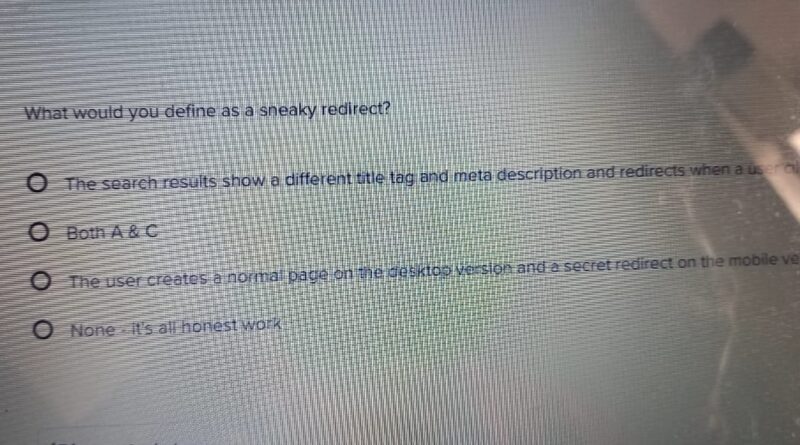What would you define as a sneaky redirect
Redirects are an essential part of any website’s functionality. When you make a change to your website, such as adding a new page or changing the URL, it’s important that you not break any of your site’s links. This could lead to users getting lost and frustrated, and it’s simply not good business. In this blog post, we will explore what makes a redirect sneaky and how you can prevent it from happening on your website. We will also provide some tips for creating smooth redirects that keep your users happy and on track.
What is a sneaky redirect?
A sneaky redirect is a page on the website that takes you to a different page without informing you. This can be done by changing the URL or adding an HTTP redirect so that the user doesn’t realize they’ve been redirected.
How does a sneaky redirect work?
Sneaky redirects are a type of link bait that use deceptive tactics to convince a visitor to take the desired action. This can be anything from taking them to a different page on the same website, to directing them to a completely different website altogether.
They often work by hiding the true destination of the link until after the visitor has clicked it, which can lead to confusion and potential lost visitors. Misleading redirects are often done in an attempt to drive more traffic to a website or lure in new subscribers, but they can also have negative consequences if not done correctly.
If you’re looking to create a sneaky redirect for your website, there are some general tips you should follow. First, make sure that the destination site is reputable and well-known enough that people will trust it. Also, make sure that the link you’re using is high-quality and relevant to your content – Sneaky redirects won’t work if people don’t click on them. Finally, make sure that you’re transparent about what’s going on – let your audience know what they’re getting themselves into before they click on the link.
What do you need to know about sneaky redirects?
Sneaky redirects are a type of link manipulation that can negatively affect a website’s search engine rankings. Specifically, sneaky redirects are links that take you to different pages on the same website without properly informing you that you’ve changed sites.
Many sneaky redirects are unintentional and harmless, but some may be used to redirect users in order to improve search engine ranking or boost traffic. If you’re concerned about your website’s search engine ranking, it’s important to track your site’s traffic and see if there are any suspicious changes.
To identify sneaky redirects, it helps to know the following:
-What indicators do search engines use to determine whether a page has been redirected?
-How can you tell if a page has been redirected incorrectly?
-What should you do if you suspect a sneaky redirect?
Conclusion
There are times when you may want to redirect a user from one page on your website to another without them knowing. A sneaky redirect is an excellent way to do this, as the user will not be able to tell that they have been redirected until they reach their destination. This can be helpful in cases where you want a user to stay on one page for a set amount of time or in cases where you want them to come back later and visit a different page on your website. Try out some sneaky redirects and see which ones work best for your website!
FAQ
What would you define as a sneaky redirect
The search result show a different title tag and meta description and redirectswhen a user
Both A and C
The user a normal page on the desktop version and a secrete redirect on the mobile version
None- it’s all honest work
Ans: The search result show a different title tag and meta description and redirectswhen a user

